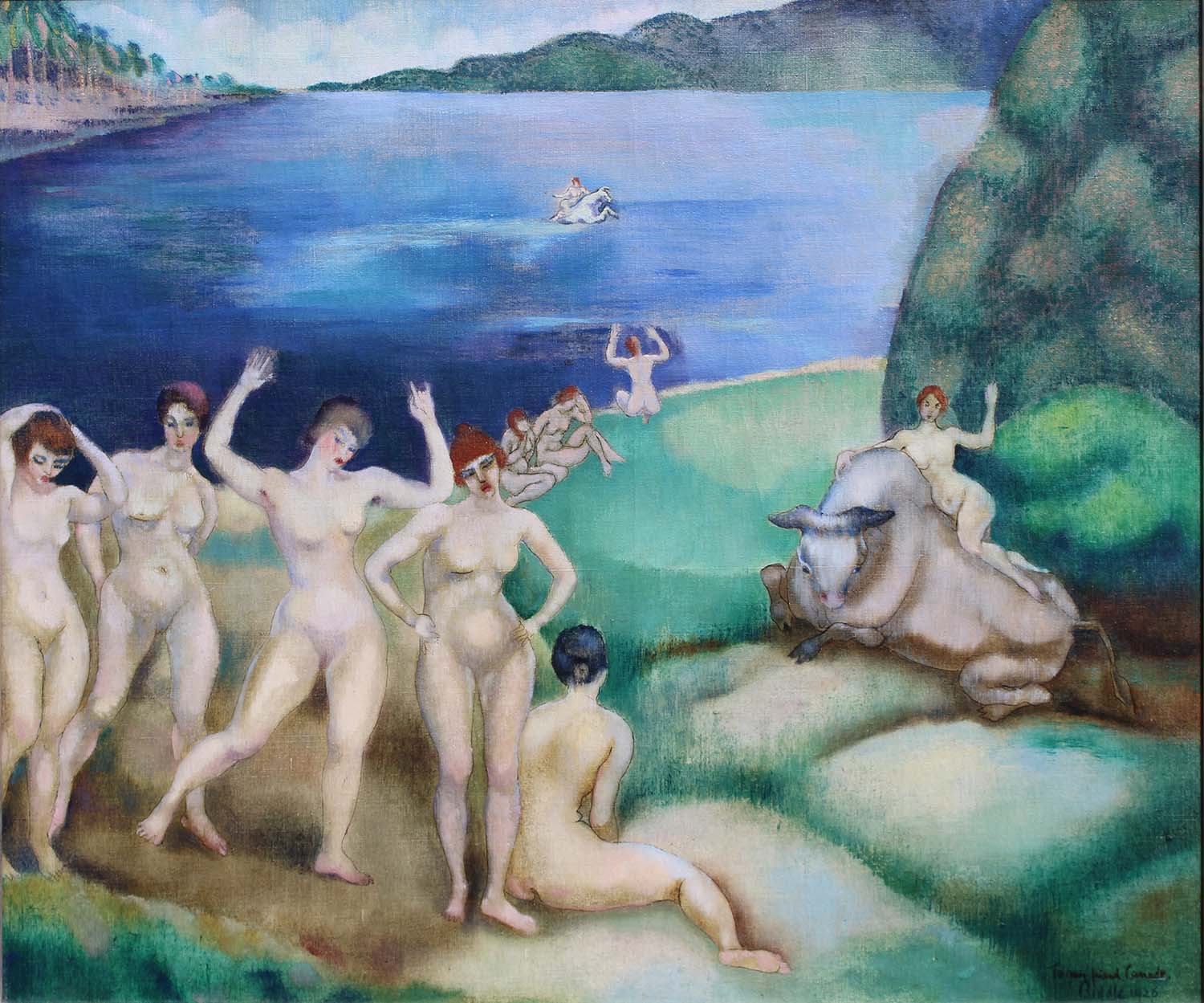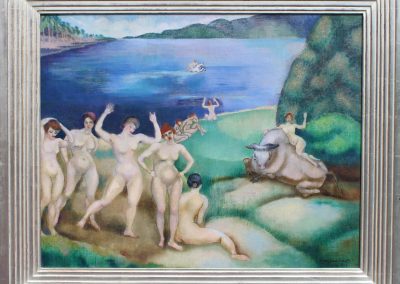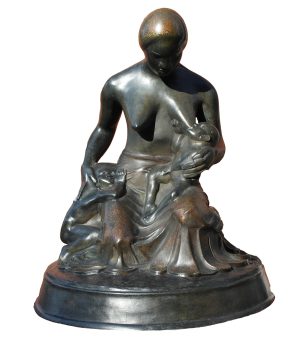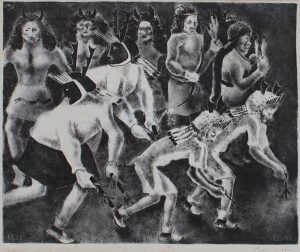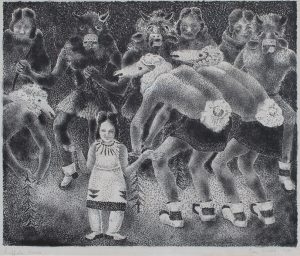George Biddle (1885-1973)
George Biddle was born in Philadelphia on January 24, 1885. A childhood friend of President Franklin D. Roosevelt, he played a major role in establishing the Federal Art Project (1935-43), which employed artists under the Works Progress Administration. He attended Groton School, graduated from Harvard in 1908, and went on to Harvard Law School. He and his brother Francis, later Attorney General of the United States, both received the LL.B. degree in 1911. But George Biddle was never to practice law. He became interested in art and went to Paris to enroll at Julien’s Academy to study painting. When the United States entered World War I Biddle was just beginning to establish himself as an artist. He volunteered for army service and was sent to France. At war’s end, like many another young man of that time, he took up residence in a foreign land. But unlike many others he had a specific goal in mind: to isolate himself for a year or two in order to devote himself to uninterrupted painting. He chose a remote village on the island of Tahiti. There he lived with the natives, learning their language, and working at his painting. The rich coloring of the tropics, transforming the three-dimensional world into a tapestry of brilliant colors, influenced him to turn from French Impressionism toward the flat design that became characteristic of much contemporary art. Late in 1922 he left the South Seas, his course as an artist firmly fixed. Biddle returned to France in 1924, not returning to the United States until 1927 where he established a printing shop in New York. In 1928 he traveled to Mexico for a sketching trip with Diego Rivera. In 1930, he married his third wife Hélène Sardeau, an American sculptress born in Antwerp, Belgium and a founding member of the Sculptors Guild. The couple spent a year in Rome working on oils, drawings, lithographs, and ceramics. They returned in 1932 to the home Biddle had built in Croton-on-Hudson. In 1942, Brazil’s Minister of Education commissioned Sardeau and Biddle for sculptural reliefs and mural paintings, respectively, at the National Library in Rio de Janeiro. In the tradition of his family he also served in government. He helped initiate the New Deal Federal Arts Projects. During World War II he was chairman of the War Department Art Committee, which sent artists to make pictoral war records at the front lines. His book Artist at War reflects his work in this period. He also published several other books including American Artist’s Story, The Yes and No of Contemporary Art, and Indian Impressions. In 1950 President Truman appointed him to the National Fine Arts Commission. The following year he accepted a professorship at the American Academy in Rome. In succeeding years his work was exhibited in more than a hundred one-man shows in America, Europe, and Asia. He executed murals for the World’s Fair in Chicago and fresco panels for the Department of Justice Building in Washington, and the lobby of the Supreme Court Building in Mexico City. He was awarded the Huntington Hartford Foundation Prize in 1954, which led him to be an artist-in-residence in 1955 at the Foundation’s home in one of the canyons of Los Angeles, California. He spent most of the following years in Croton-on-Hudson, New York and travel in his later years took him to Japan, Southeast Asia, India and Italy. George Biddle died at the age of eighty-eight in Croton-on-Hudson on November 6, 1973.
Allegorical Scene with Nymphs 1926
by George Biddle (1885-1973)
| Medium | Oil |
| Medium Detail | Oil on canvas |
| Dimensions | 19 1/2 x 24 inches; F: 25 x 29 1/2 inches |
| Signed Location | Signed and dated, lower right |
| Date Created | 1926 |
| Provenance | Private collection, Rhode Island |
| Comments | Inscribed, “To my friend Canadé,” lower right Note: The inscription refers to American artist Vincent Canadé (1871-1961) |
This artwork is no longer in our inventory
Contact Us About This Piece

